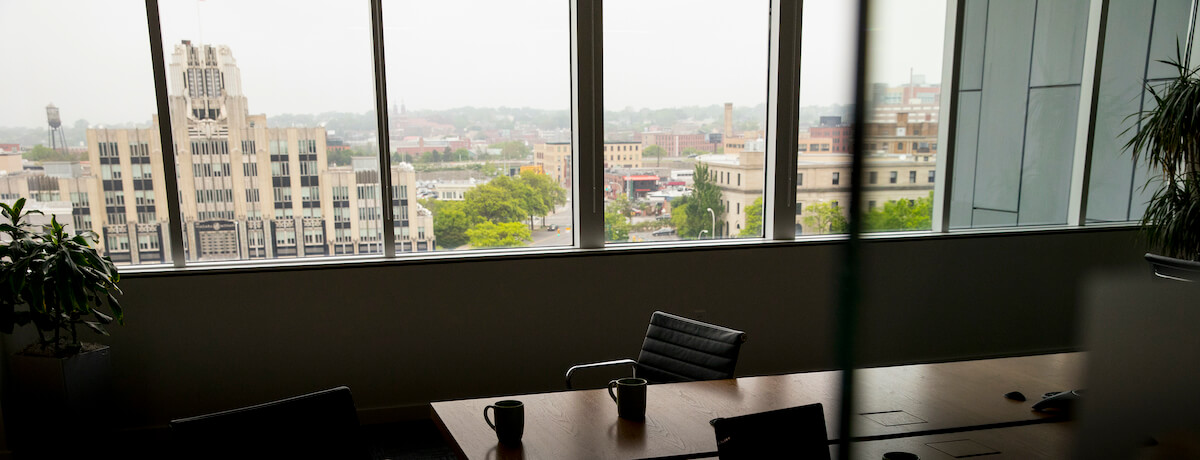Editor’s Note:
Terakeet offers many tangible benefits that make it the kind of place where people want to stay and grow their careers.
There’s another type of benefit that Terakeet offers that is more nuanced but no less important! Work-life balance is an essential core value at Terakeet. Adulthood often comes with conflicts that arise during 9 to 5 business hours, or we simply need time to reset and re-calibrate before diving back into work. Terakeet’s flex scheduling allows employees to do this.
What does having a better work-life balance mean?
As of May of 2021, 126.58 million Americans were working full-time jobs. That means that nearly 127 million people work at least 35-40 hours per week and juggle their personal lives. That means many Americans are helping children with school work, shuttling elderly relatives to and from doctors’ appointments, exercising, shopping for weekly groceries, and more, all while meeting their business commitments during the week.
This is what work-life balance is all about. It’s often a delicate process, and striking a great balance between the two sides of the coin can lead to better mental health (and overall health) outcomes. The definition of “work-life balance” is ever-evolving, and businesses are constantly evaluating how to meet their employees’ needs best as things change.
Some businesses have decided to address the growing need for better work-life balance by implementing flexible work scheduling. Terakeet long ago decided there isn’t a one-size-fits-all solution to scheduling. Flexible work arrangements have been an instrumental part of our organization’s philosophy, and we are proud that our employees continue to find ways to strike a healthy balance between their work and home lives.

What is flexible scheduling?
Flexible scheduling, flexible work arrangements, or “Flex Scheduling,” as it is most commonly called, is a type of work schedule that emphasizes the importance of balancing business commitments with personal commitments.
Put simply, flex scheduling allows people to (within reason) select the hours they work if a traditional 9 to 5 schedule conflicts with their productivity. These flex schedulers still meet their work requirements and work a full-time schedule (however, their employer defines a “full-time work week”).
At Terakeet, we use flexible work schedules in several ways. Some folks choose to work a traditional 9 a.m. to 5 p.m. schedule, and they use flex scheduling as personal needs arise. Some Keeters decide to work slightly different hours consistently. The beauty of flex scheduling at Terakeet is that folks can handle their unique needs without sacrificing the quality or consistency of their customer work. Flexible scheduling has long been an essential part of life at Terakee because it emphasizes each employee’s well-being.
How does flex scheduling contribute to better work-life balance?
Flexible scheduling allows our employees to figure out what priorities they have on any given day, and it will enable them to tackle those priorities according to their needs. This balanced, sensible approach has given ‘Keeters the kind of freedom that leads to better outcomes for our staff and our business.
For instance, our working parents who have to see their children off to the bus or get them to school will flex their schedules to take care of transportation. Other Keeters managing health conditions will flex to make doctors appointments. And a few ‘Keeters are in school and use flex scheduling to attend class or get assignments done.
Flex scheduling acknowledges that adults have whole, complex lives outside of work. The studies show that flex scheduling leads to more productive, happy employees. A Compare Camp study showed that 73% of employees felt that having flexible work scheduling increased their overall work satisfaction.
A Zenefits study of hundreds of small businesses found that 78 percent of employees surveyed felt that flex scheduling allowed them to be more productive. Flextime leads to better time management, better focus during the workday, and less time spent stressing about juggling it all (childcare, loved ones, health concerns). The same study also found that, in the end, businesses that offered flex time had better retention rates and a happier workforce.
What other factors lead to a healthy work-life balance?
Finding an outstanding work-life balance requires several different approaches that extend beyond flexible work hours. Other workplace factors that help employees find an outstanding work-life balance include:
- Team support
- Fun employee activities and engagements
- Generous PTO/vacation time
- Career growth plans
Work-life balance is key to our team’s success, which is why we offer all of these benefits and more. When ‘Keeters are happy at work, they are more likely to squeeze the joy out of their free time. They take PTO to explore the wilderness, or they join fun activities like our recreational rowing team, or they simply create a schedule that allows them to work on a favorite hobby or creative endeavor. Every employee is unique at Terakeet, and every employee brings something important to the organization. We have found that this is especially true when we allow employees to find the work-life balance that best suits them!

Keeter tips for maximizing work-life balance
It may not be possible to consistently strike the perfect balance between work and life. That said, ‘Keeter have become well-versed in the art of maximizing work-life balance. We asked a few ‘Keeters to give us their best, most sage wisdom for making the most of their work-life balance. Here is what they had to say:
Digital Content Specialist Emilee Janitz
“I think it’s important to have sacred moments outside of work. Pieces of your day that you would compromise if it were an emergency or necessary, but make a point to prioritize on the day-to-day. For example, my ‘sacred moment’ is between the hours of 5:30 and 7:30 pm. That’s my time to make & eat dinner with my husband, take care of and enjoy our infant son home from daycare, and put him to bed. Everyone should have pieces of their day or rituals outside of work that repeatedly come first!”
SEO Manager Andrea Fitta
“I keep my home office in a place that is separate from the rest of the house. I close the door and go ‘home.’ It helps me keep that mental divide between work and personal life.”
Web Designer Jolee Main
“Have something in the morning you look forward to (even if it’s as small as a routine breakfast/tea/coffee but could be larger like a run or working on a hobby), so you’re not waking up ‘for work’ but rather, waking up to live your life where work is part of your day.”
Some favorite ‘Keeter reads on striking a good work-life balance
Senior Director of Digital Outreach, Jordan Arnold, shared a sage piece on how Author Nora Roberts has learned to balance her career as a successful author with her personal life. The most compelling quote from the article comes from Roberts herself:
“The key to juggling is to know that some of the balls you have in the air are made of plastic, and some are made of glass.”
No matter what you’re juggling in life, it’s essential to take a moment to define your priorities and make those priorities clear to the people around you.
One ‘Keeter offered this piece on striking a good balance between work and home that frequently emphasizes the importance of evaluating your personal, mental health. Individual needs change, and so too will your business commitments. Setting boundaries and goals are great ways to improve your overall satisfaction with work and home life.
Another ‘Keeter frequently references a piece on the importance of taking your PTO to remind them that breaks are not only significant, but they are also necessary! ‘Keeters use their PTO for all sorts of fun vacations and events. A bonus of taking fun breaks and sharing those memories with team members is finding commonalities and shared passions.
‘Keeters know how to work hard and enjoy their time at home!